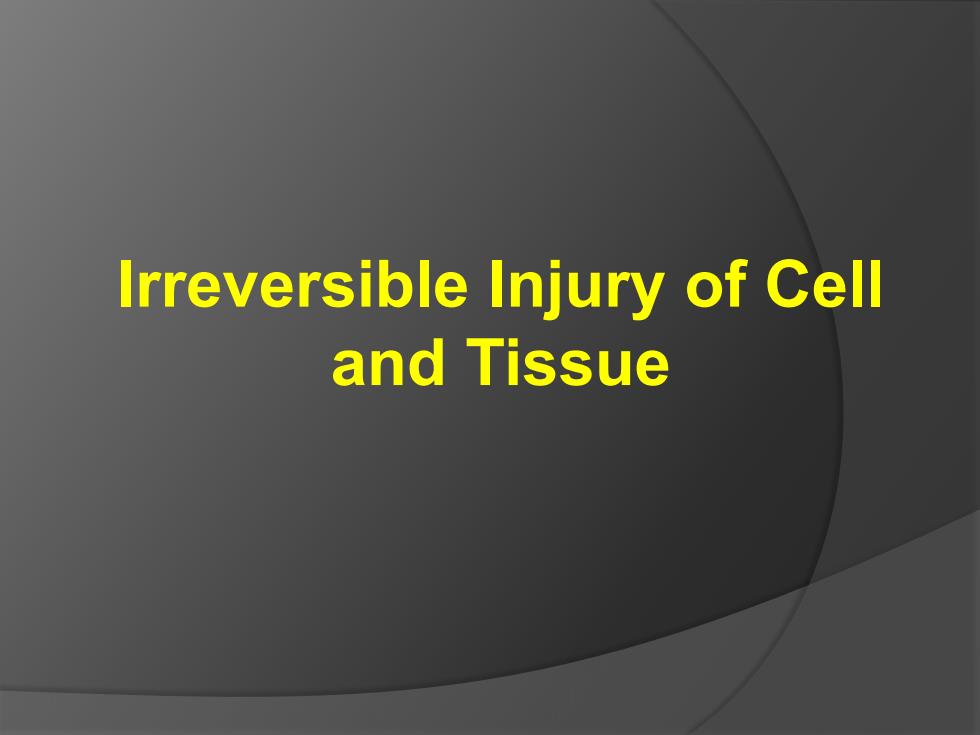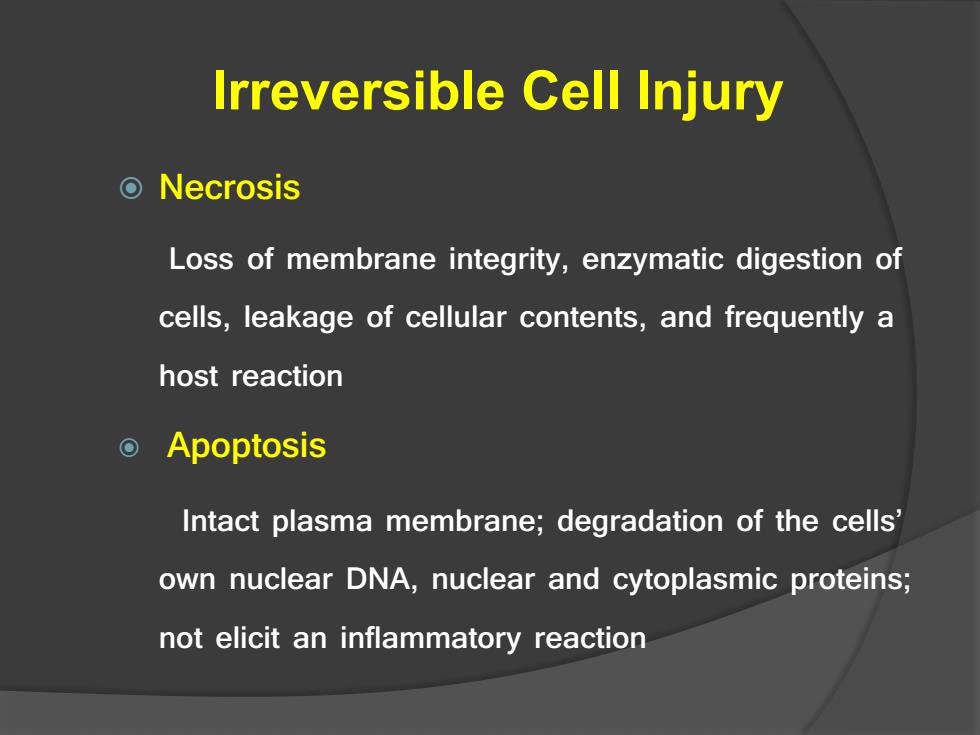
Irreversible Injury of Cell and Tissue
Irreversible Injury of Cell and Tissue

Irreversible Cell Injury o Necrosis Loss of membrane integrity,enzymatic digestion of cells,leakage of cellular contents,and frequently a host reaction o Apoptosis Intact plasma membrane;degradation of the cells' own nuclear DNA,nuclear and cytoplasmic proteins; not elicit an inflammatory reaction
Irreversible Cell Injury Necrosis Loss of membrane integrity, enzymatic digestion of cells, leakage of cellular contents, and frequently a host reaction Apoptosis Intact plasma membrane; degradation of the cells’ own nuclear DNA, nuclear and cytoplasmic proteins; not elicit an inflammatory reaction

NORMAL NORMAL CELL CELL Reverslble Injury Recovery Condensation of chromatin Swelling of endoplasmic Membrane blebs Myelin reticulum and figure mit ochondria Membrane blebs Cellular fragmentation Progressive InJury Myelin Breakdown of Apoptotic APOP TOSIS figures plasma membrane, body organelles,and nucleus;leakage of contents Inflammation NECROSIS Phagocyte Phagocytosis of apoptotic cells and fragments Amorphous densities in mitochondria

MORPHOLOGY OF NECROSIS 1. Nuclear changes:karyolysis,pyknosis,karyorrhexis KARYOLYSIS PYKNOSIS KARYORRHEXIS Nuclear fading Nuclear shrinkage Nuclear fragmentation chromatin dissolution due to DNA condenses into shrunken Pyknotic nuclei membrane ruptures nucleus action of DNAases RNAases basophilic mass undergoes fragmentation Nuclear dissolution ANUCLEAR NECROTIC CELL
MORPHOLOGY OF NECROSIS 1. Nuclear changes: karyolysis, pyknosis, karyorrhexis

Micrograph showing karyolysis and contraction band necrosis (left of image)and ischemic (nucleated)cardiac myocytes (right of image)in an individual that had a myocardial infarction
Micrograph showing karyolysis and contraction band necrosis (left of image) and ischemic (nucleated) cardiac myocytes (right of image) in an individual that had a myocardial infarction